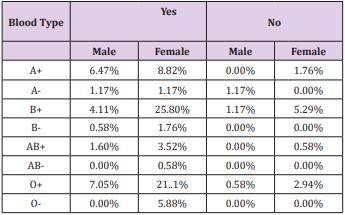Does Blood Group Influence on Tomato Likeliness?
Introduction
Blood Group System
The term blood group system is clarified as system in human species where cell surface antigens are managed at a single locus or by two or more very meticulously linked homologues genes. Karl revealed that blood chunking was an immunologic process which eventuate when the beneficiary of blood adulteration has antibodies in paradox of the contributor blood cells. He was bestowed noble premium in Phytology in 1930. The alteration in human gore (blood) are due to the existence of or nonappearance of undeniable protein fragments termed antigens and antibodies. The determinant are situated on the exterior of the RBCs and the antiserums (antibodies) are in the blood claret. There are supplementary than 20 genetically resolute blood group systems identified currently. The ABO and Rhesus (Rh) methodology are the utmost significant ones castoff (used) for lifeblood transfusions. ABO blood collections are furthermost vital in auspicious of safe lifeblood transfusion. The blood set A has antigen A on RBCs.
While blood set B has antigen B and antibody A. AB has A and B antigen and Not any antibody. O has nope antigen but Anti-A and Anti-B [1]. Rh antigens are transmembrane proteins with circlets manifested at the outward of red blood compartments. They are baptized (named) for the rhesus monkey. RBCs that are Rh positive prompt the antigen nominated D. Rh system gets more intricated because here the antigen is Rh antigen [2]. Actually different people have different blood groups. So, We had collected different information about this correlation from different people. According to our research, most of the students had B+ and o+ blood groups. Then, according to our research, We had collected the information about their correlation with Tomato. So, B+ and O+ people like more tomatoes. While others like A- and AB- had very less likeness towards tomatoes. Purpose of the recent study was to match blood grouping with Tomato likeliness.
Materials and Methods
Blood Grouping
First of all, We introduced our self to the person whom blood I was going to draw. Then, We washed and sanitized our hands. After this, We selected the appropriate needle depend on the patient’s age and physical characteristics. We asked him to sit in a chair and made sure that his arm is not bent at thee elbow. Asked him to made a fist and then traced his veins with my index finger. Disinfected the area that We planned to puncture with an alcohol wipe. Then, We interleaved the spike into the vein and permitted the tube to fill. Finally, We detached the needle and blood was collected.
Project Designing
The main goal of my project was to correlate blood group with tomato likeliness. For this estimate, I collected information from different people about their blood groups and their likeliness towards tomato. They gave different point of views about their tomato likeliness and unlikeness. In this way, I completely designed my project. The overall of 170 subjects. The subjects were scholars of Bahauddin Zakariya University Multan, Pakistan.
Statistical Analysis
Statistical analysis were achieved by using MS Excel.
Results
Does blood group influence on tomato likeliness is given in Table 1.
Discussion
Questionnaire constructed studies have given an essential advancement in recent researches. Alma Lee, Health consultant at pH Labs had worked on the relationship between blood group and tomato lovers. Tomatoes are good for every blood group. The NIH reported that epidemiological studied had associated tomato consumption with a decreased risk of prostate cancer. Tomatoes are truncated in calories, yet occupied with nutrition, said Heather Mangieri. Tomatoes are higher in fiber and a virtuous cause of vitamin A, C, B2…folate and chromium.
Conclusion
It was concluded from the current study that B+ and O+ people like more tomatoes. While others have very little likeliness towards tomatoes. B+ were 25.8% and O+ were 21.1%.



No comments:
Post a Comment
Note: Only a member of this blog may post a comment.